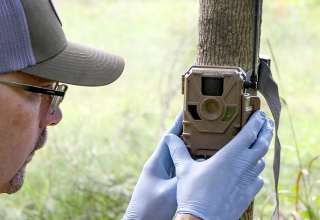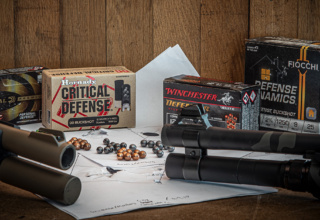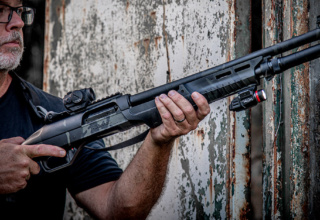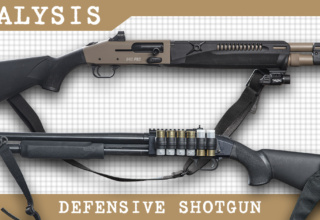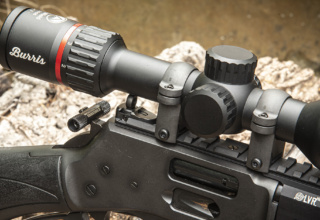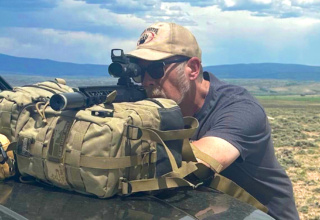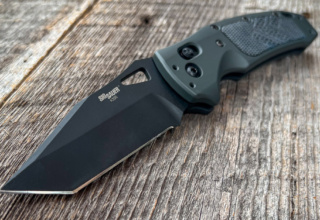Stealth Cam’s new Fusion data transfer technology removes all the hassles and hit-or-miss challenges traditionally associated with wireless trail camera systems
by Rob Reaser, photography by Therese Shaw
Hunters who have grown up in the digital age of trail cameras will, thankfully, never understand the struggle of those who hail from the dark ages…when trail cam captures were made on a roll of film and limited to a scant 24 or 36 frames. You then had to run the film to a processor and wait for prints to be made.
It was costly, aggravating, frustrating, and a massive waste of time and energy for a few poorly exposed and grainy photos…often of racoons, possums, and squirrels instead of those anticipated midnight monster bucks.
Progress is a good thing.
Flash forward to the wireless age, where trail cameras can send photos directly to our mobile device or home computer. Forget about swapping rolls of film or even downloading an SD card full of critter images. Now, the critter shots come to us without us having to step into the field and risk contaminating our monitoring station with human scent.
But all has not been rosy in the wireless trail camera world. The theory sounded enticing when the technology first rolled out, but theory and practicality often walk separate paths. From our experience and the anecdotal reports we’ve had from many hunters across the country, wireless trail cam performance has often left much to be desired. Wireless coverage can be an issue, but more significant problems have been encountered with setup protocols, firmware updating, and customer support when things go south. There are many reasons for this, but to the hunter who spends good money on a wireless camera system only to have poor results or lousy manufacturer support, there are no acceptable excuses.
When Stealth Cam announced their new Fusion wireless technology earlier this year, we thought that, perhaps, the tide was turning. Stealth Cam billed Fusion as a simple-to-setup wireless technology featuring a network-certified camera system—the first in the industry. This means that if any problems do arise, the consumer works directly with Stealth Cam to troubleshoot and resolve the issue. This contrasts with other wireless trail cam systems that off-load customer support to a third party that may or may not resolve the problem quickly, if at all. We’ve heard some horror stories.
We acquired a Stealth Cam Fusion this summer and have had nothing but success using it the last couple of months, monitoring plots and attractant stations in our remote central Michigan hunting area. As promised, set up was fast and easy and went off without a hiccup.
It’s hard—maybe impossible—to take a wrong turn in setting up the Fusion camera system. If you want a deep dive into the system, open or download the online instruction manual and see for yourself. The short version is that you download the free “Stealth Cam COMMAND” app to your iOS or Android device, which is available from Google Play or the iOS app stores.
Beneath the camera’s battery tray is a QR code. Capture the code with your mobile device.
From there, the Stealth Cam COMMAND app will walk you through the account registration and sign-in steps.
Next, you will choose your data plan and follow the instructions for setting up the camera, which you do through your mobile device. That’s it.
Stealth Cam offers three Fusion systems based on your data carrier selection. You can choose between Verizon or AT&T, or you can select a Global carrier network. There is a different camera for each network. The Verizon and AT&T cameras retail for $199.99 while the Global option camera is $249.99.
One of the things we really like about the Fusion wireless data plans is that they are highly customizable to fit your needs and budget. For example, a monthly plan is offered that will appeal to hunters who only have their camera out for a short time—say, during the hunting season. There are four different monthly plans based on the image volume you anticipate. This ranges from $5/mo for 650 images to $20/mo for unlimited images. There is even a $50 Bundle Pro 3GB option that allows for up to 36,000 images and three cameras. All monthly plans come with one year of cloud storage.
If you like to keep your cameras going year-round, there are one of the four pre-paid annual plans to choose from. These follow the same data/image volume as the monthly plans but at a slightly reduced rate.
Another big advantage of the Fusion system is its automatic firmware updating. The system notifies you of any operating system upgrades. You can then install the upgrades from anywhere without having to go to or retrieve the camera.
In addition to having access to all of the camera’s images from anywhere on any device that has the Stealth Cam COMMAND app installed (mobile device, tablet, or desktop computer), the app lets you change the camera settings remotely. In short, the Fusion system provides true remote image access and device control from anywhere you have an internet connection.
As for the camera, it is a 26 Mp unit that was developed to provide an ideal balance between data transfer, storage, and image quality and review. Images are captured at 16, 8, or 4 Mp with an SD card compatibility of up to 32 GB. Included is Stealth Cam’s popular Quick Set pre-programming, which makes establishing photo burst and timeout delay a cinch. Since the overall Fusion system is intended to provide hands-off management in remote locations, the camera includes an external power jack that accepts a 12V battery. Stealth Cam also sells a Solar Power Panel with an integrated rechargeable battery that will keep the system running.
We’ve managed to capture all manner of critters on the Fusion this summer and have been extremely pleased with the image quality and data transmission performance. And as you can see from the above picture, the camera’s Matrix Blur technology does a fantastic job of freezing action.
We don’t know where trail camera technology will be in another 5 or 10 years, but for now, we’re just glad to see that at least one system has delivered wireless performance that is reliable, easy to use, and priced for any hunter’s budget.












